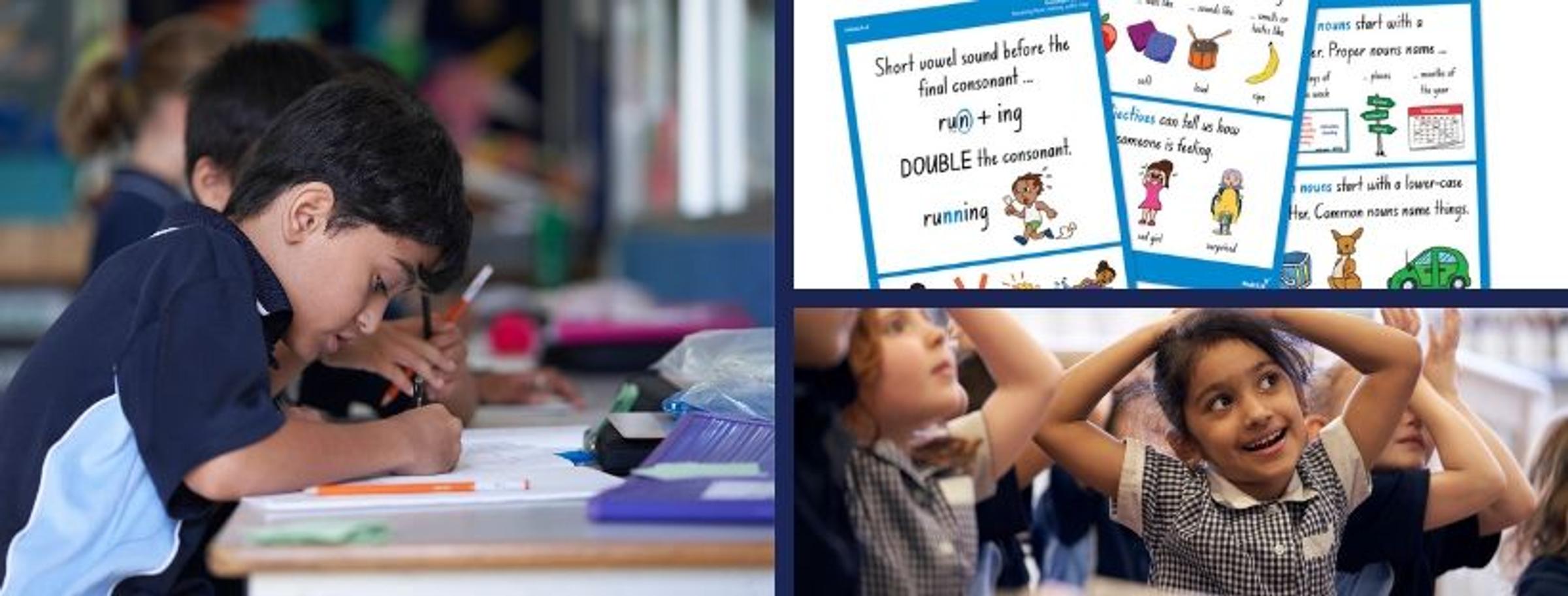Decodable reading books

Last week, the Reception students began to take home their first InitiaLit decodable reading books. This experience was received with great delight by the students and eager anticipation by their parents. During literacy, students have been consolidating their phonological awareness. This includes syllables, rhyme and blending and segmenting. As well as learning the sounds m, s, a, t, p, f, r, i, c, o, d and identifying beginning, middle and end sounds in words. Students have been listening carefully to the sounds the letters make, learning high frequency words, practising their articulation and letter formation. Practising these skills in isolation and in a sequence allows time for our students to develop their skills, understanding and confidence, so that when they apply these skills when reading and writing they will be successful.
Our lessons consist of explicit teaching to whole class groups of the skills listed above. This is then followed by small group activities. These activities have been designed for students to access learning that is crucial in order for them to consolidate and achieve their next step.
Why do we need to do reading at home?
Children need a lot of practice to develop their reading skills to the point of fluency. Ten minutes of daily reading at home with a supportive adult can make all the difference. This will enable children to demonstrate how to apply their letter/sound knowledge to reading simple text. Reading at home should be a successful and positive experience. If it is turning in to a very stressful time, please do consult your child’s class teacher for advice. By the time appropriate books are coming home, children will be familiar with what to do with them.
What are decodable reading books?
Decodable texts contain a large percentage of words that incorporate the letter-sound relationships that students have been taught. Decodable texts increase in complexity as the student learns more of the phonetic code.
What kind of reading books will my child bring home and why?
The home reading books that your child will bring home will be decodable texts and contain words that they can ‘sound out’. This will enable children to use their knowledge of letter-sound relationships that they have been taught in class. You will notice that the vocabulary in these books is very controlled. This is because at this early stage of the reading process, words need to follow regular sound/symbol patterns (e.g., dog, fan, hop) so that children are given opportunities to work out the words for themselves, with your support. Guessing words from a picture or from context should not be encouraged. The stories, by necessity, will contain some tricky words in line with the tricky words that children are being taught. These are words that cannot be sounded out in the same way and should be previewed.
What else can I do to support my child at home?
There will be many, many informal opportunities to develop your child’s language at home. Talk to your child, using interesting vocabulary. Explain new words. Join a local library and borrow books to read to your child daily. Talk about the stories you read to your child. Restrict screen time and replace it with opportunities to develop oral language. Help develop your child’s curiosity about language and the sounds within words by playing word and sound games such as ‘I Spy’. Teach your child nursery rhymes. Revise the sounds for the letters that they are learning and help them work out words using their sounds. As the year progresses, practise the tricky words that they have learned. The most important thing is to keep it light and playful but purposeful.
